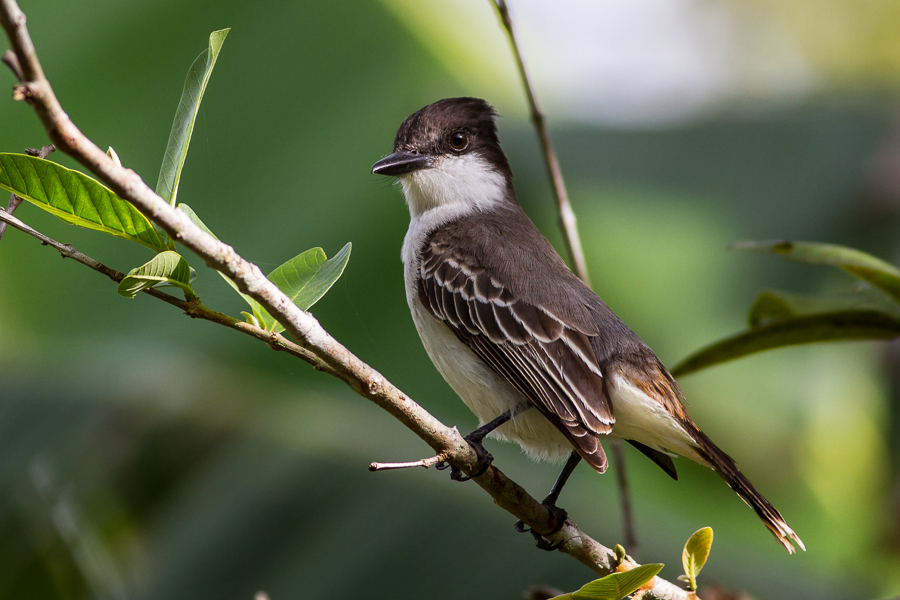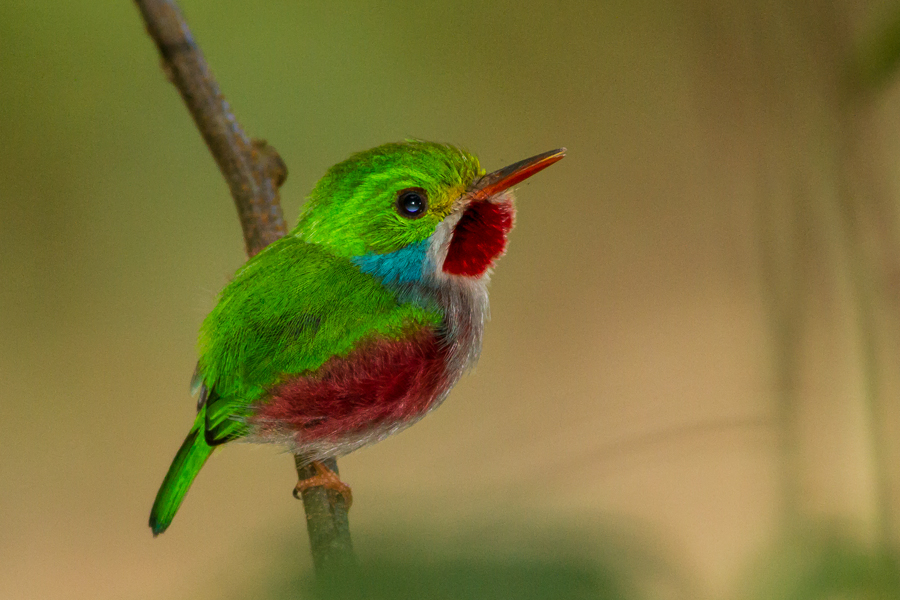Cuba Day 2: #806 in Old Havana; #807-#818 in Pinar del Rio
Day 2 was all birding. We got up early and had a quick continental breakfast at the hotel. Then we walked the three blocks to where we could meet our bus, and added #806 Cuban Martin (aka Cuban Swallow) while waiting to load our baggage. (Lucky too. These were the only ones we ended up seeing the whole trip, and it’s an endemic species.)
We drove about an hour and a half west out of the city into the Pinar del Rio province where our first stop was the Ecological Station of Canada del Infierno, (aka Sierra del Rosario–we moved around a lot and not speaking Spanish I’m a little hazy on the exact names of some of the places we visited). Here we met our local ornithologist guide Hiram Gonzalez for the first time, and chatted with him and Fidel Hernandez Figueroa about local birds and conservation projects. Then it was out into the field for some birds! It was a very pleasant walk, through some gorgeous Caribbean scenery with lots of good birds including #807, Cuban Bullfinch, #808 La Sagra’s Flycatcher, and #809, Cuban Emerald. There was also a possible Cuban Vireo that I missed, and a possible Cuban Grassquit seen by some of the group.

I could have easily stayed here all morning since the birds were hopping, but all too quickly we were off down the road to the next stop about 1.5km away in the same preserve. And this road had even more birds! Here we added #810 Cuban Tody, #811 Scaly-naped Pigeon, #812 Cuban Trogon (the national bird of Cuba), #813 Cuban Pewee, #814, Western Spindalis, #815 Red-shouldered Blackbird, and #816 Tawny-shouldered Blackbird. It eventually started raining on us (one of the few times during the trip) but fortunately I had remembered my plastic bag to protect my camera gear, and the rain wasn’t too bad so we made it back to the bus relatively intact.

On the ride over to the next location we added Great Blue and Little Blue Herons to the trip list from the bus, and American Coot at a cocktail stop where we listened to local bands. (Almost every restaurant had a local band.) During the rain we a nice lunch at Las Terrazas (one of the better lunches we had on the trip.)
After lunch we drove a couple of hours to Pinar del Rio in the East. After checking into the Hotel Mirador, we hit the upper reaches of Hacienda Cortina to search for a couple of endemics, Cuban Solitaire and Olive-capped Warbler. Janet and Hiram found the Solitaire, and several of us heard it; but I did not see it. I did see #817, Black-whiskered Vireo though. This bird’s also present in the ABA area in southern Florida, but I’ve never found it there. Finally the Olive-capped Warbler made a brief appearance as we were leaving; and, after stopping the bus, pretty much everyone got on it. That made it #818.
Dinner at the hotel was decent but not as good as lunch. The music was nice though. (Almost every almuerza and comida during the trip featured a Latin band, usually a guitar or two, maracas, and a singer.) They all have CDs, and since CDs are one of the few souvenirs Americans are allowed to bring back from Cuba, I bought a copy of almost every one.

January 9th, 2013 at 2:06 PM
Wonderful description and photos! Do you have a way to contact Hiram Gonzales or Fidel Hernandez Figueroa? We will be in Havana late January – early February and are looking for a day birding trip with a guide. Thanks. Bill Thomson